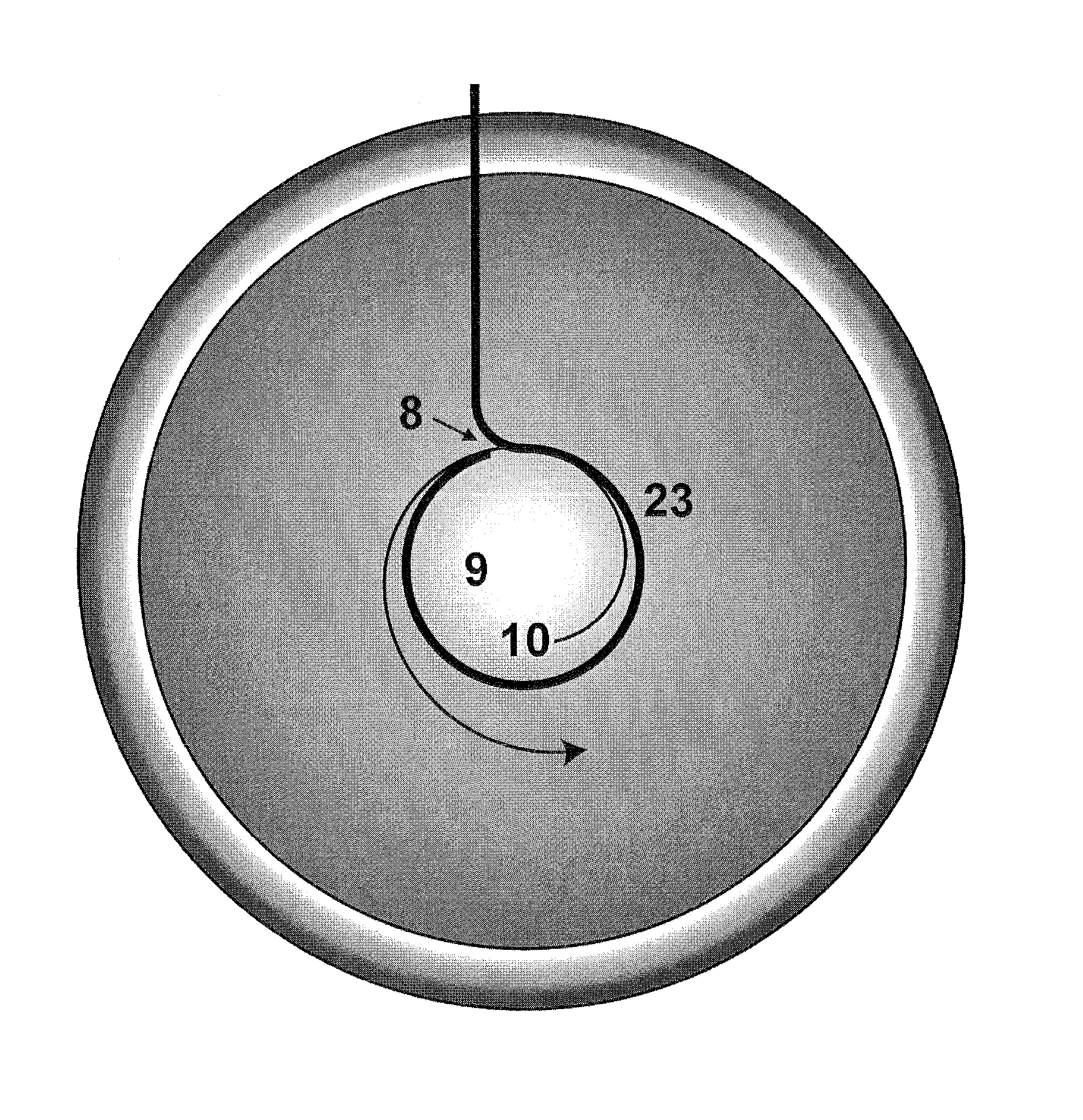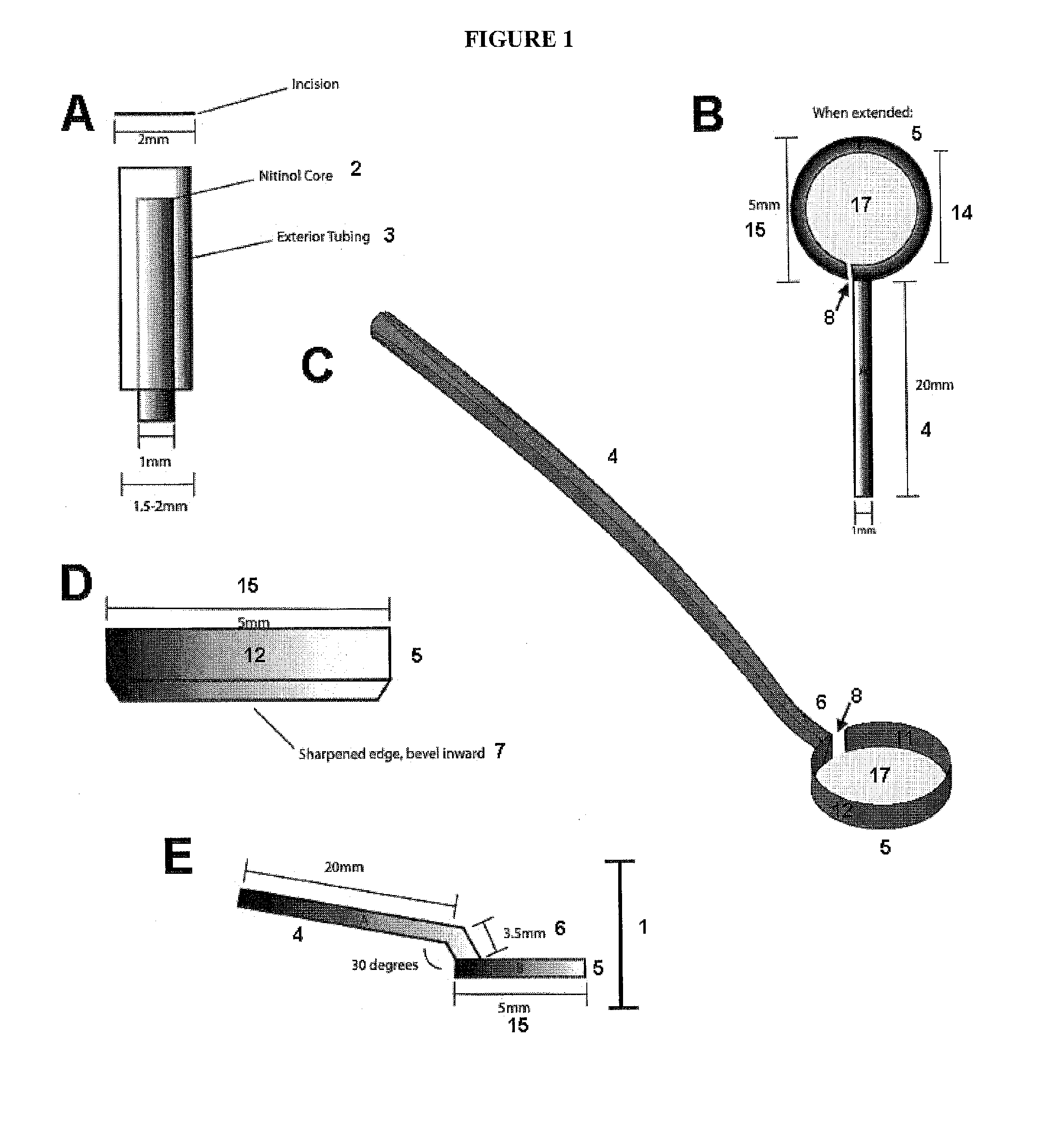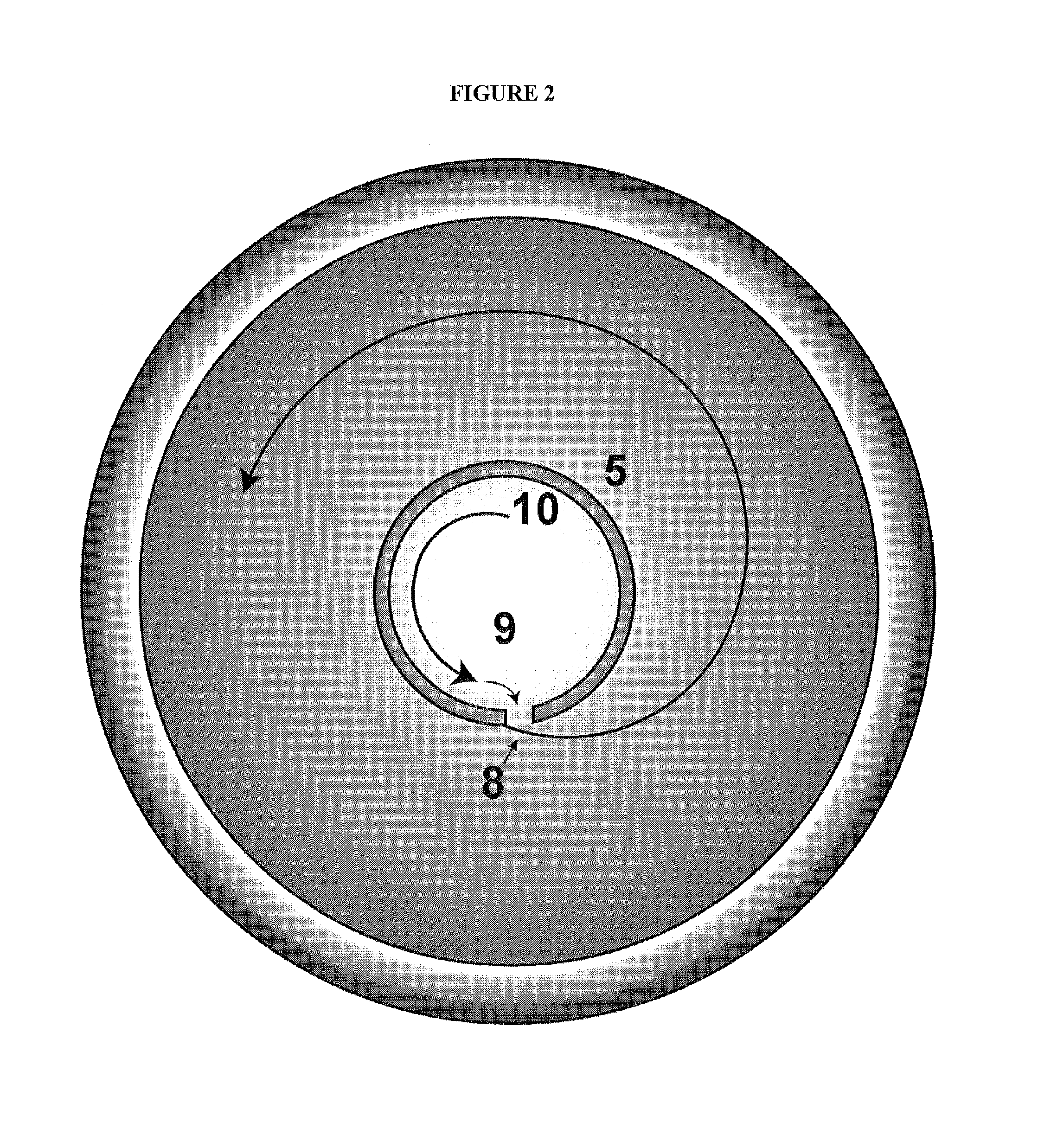Devices and Methods for Creating a Predictable Capsulorhexis of Specific Diameter
a capsulorhexis and specific diameter technology, applied in the field of cataract surgery, can solve the problems of radial tear complication, potentially blinding complications, difficulty in controlling the cutting tip path of the device, etc., and achieve the effect of facilitating the movement of the devi
- Summary
- Abstract
- Description
- Claims
- Application Information
AI Technical Summary
Benefits of technology
Problems solved by technology
Method used
Image
Examples
embodiment 1
Nitinol Knife
[0110]Initially, a flexible circular nitinol blade was designed that could be inserted into the anterior chamber through a cannula. Nitinol is a 1:1 nickel:titanium alloy most common used for expandable stents. The alloy has both shape memory and superelastic properties. The design took advantage of the alloy's superelasticity. The device was designed so that the blade would be retracted into a cannula, which would then be inserted into a corneal incision. The nitinol blade would then be deployed inside the anterior chamber, where it would reassume its circular shape. The blade would then be used to cut the capsule in “cookie cutter” fashion. A contract manufacturer supplied the nitinol prototypes based on computer-aided design (CAD) files provided, and the bottom edge was sharpened with a drummel. See FIG. 1 for original design.
[0111]The nitinol blade was tested in a bovine ex vivo environment. Because of difficulty with minimally invasive insertion of the blade into t...
embodiment 2
Nitinol Guide Wire
[0112]The results of the first embodiment caused a reconsideration of the strategy of a cutting device. The strategy was changed to guiding a manual capsulorhexis inside a circular device 19. A guide wire 21 was designed, again made from nitinol. Deployment through the incision was similar to the first device 1; the wire 21 was drawn into a cannula 20, inserted into a corneal incision, and then deployed in the anterior chamber, see FIG. 3. The wire 21 rested on top of the capsule, allowing for guidance of a manual capsulorhexis using standard techniques with an Utrata forceps. Prototypes were made by a contract manufacturer based on CAD's provided. There was difficulty inserting the device 19 through a corneal incision due to the curving of the alloy as it entered into the anterior chamber. The prototypes were tested in a bovine ex vivo eye open-sky environment. In each experiment, the guide wire sat flush on the capsule, and guided the rhexis to some degree for on...
embodiment 3
Flexible Suction Ring
[0113]This embodiment maintained the concept of CCC guidance, but moved away from nitinol as a material, as well as the use of manual downward pressure as a method of adherence to the capsule. It was felt that the downward pressure used in the previous embodiments was not optimum. Instead, a flexible polymeric device capable of producing suction against the capsule was designed, which theoretically would provide adequate adhesion in order to guide a CCC, see FIG. 5. The prototype was again made by a contract manufacturer based on the furnished CAD's. The device was first tested in ex vivo bovine eyes. The device was folded and insertion through a 2.4 millimeter incision was attempted but it was deemed too small for atraumatic entry, and so an open sky technique was adopted. The device was placed on top of the capsule, and suction was generated using a 27-guage needle attached to an extension of the ring prototype. Unfortunately none of the devices tested provide...
PUM
 Login to View More
Login to View More Abstract
Description
Claims
Application Information
 Login to View More
Login to View More - R&D
- Intellectual Property
- Life Sciences
- Materials
- Tech Scout
- Unparalleled Data Quality
- Higher Quality Content
- 60% Fewer Hallucinations
Browse by: Latest US Patents, China's latest patents, Technical Efficacy Thesaurus, Application Domain, Technology Topic, Popular Technical Reports.
© 2025 PatSnap. All rights reserved.Legal|Privacy policy|Modern Slavery Act Transparency Statement|Sitemap|About US| Contact US: help@patsnap.com



